Finding your dream home is an exciting milestone. But once that emotional “yes” is out of the way, there’s a series of practical steps you need to follow before you can truly settle in. By tackling each of these key actions in a structured way, you’ll avoid last‑minute surprises, protect your investment, and ensure a smooth closing and move‑in process. Here are the seven critical steps to take once you’ve found—and put an offer on—your future home.
1. Secure and Confirm Your Financing
Even if you’ve been pre‑approved for a mortgage, it’s vital to reconfirm your loan details now that you have a specific property in sight:
- Lock in Your Interest Rate: Mortgage rates can fluctuate daily. Ask your lender to lock in the rate to protect you from market volatility between now and closing.
- Review Loan Terms: Examine your loan’s amortization schedule, closing costs, and any prepayment penalties. Ensure you understand exactly what you’ll pay each month, and for how long.
- Submit Additional Documentation: The lender may request updated bank statements, pay stubs, or tax returns based on the home’s purchase price. Respond quickly to avoid delays in underwriting.
Securing your financing not only gives you peace of mind but also demonstrates to the seller that you’re a committed buyer.
2. Schedule a Thorough Home Inspection
A professional home inspection is your best defense against hidden problems:
- Hire a Reputable Inspector: Choose someone certified through a recognized organization (e.g., ASHI or InterNACHI).
- Attend the Inspection: Walk through the property with the inspector to learn firsthand about potential issues with the foundation, roof, HVAC, plumbing, or electrical systems.
- Review the Inspection Report: Expect a detailed report with photos, cost estimates for recommended repairs, and notes on safety concerns or code violations.
This step helps you make an informed decision about proceeding with the purchase or negotiating repairs.
3. Negotiate Repairs and Seller Concessions
Once you have the inspection report in hand, you can approach the seller with confidence:
- Prioritize Repairs: Focus on major structural or safety issues (e.g., mold, water damage, faulty wiring). Minor cosmetic fixes can often be handled after closing.
- Request Credits or Price Reductions: Instead of asking the seller to complete repairs, you might negotiate a credit at closing, giving you the flexibility to choose your own contractor.
- Set Clear Deadlines: Include language in the purchase agreement that specifies a timeframe for the seller’s response and completion of agreed repairs or credits.
A well‑negotiated deal ensures you won’t be hit with unexpected expenses after you move in.
4. Finalize Homeowners Insurance and Protect Your Investment
Lenders require proof of insurance before funding your mortgage, but homeowners insurance offers benefits beyond satisfying loan requirements:
- Shop for Coverage: Compare policies for dwelling coverage, personal property protection, and liability limits. Look for endorsements that cover flood or earthquake risk if you live in vulnerable areas.
- Set an Effective Date: Schedule your policy to begin on the day of closing so there’s no coverage gap.
- Review Deductibles and Premiums: Higher deductibles lower premiums but increase out‑of‑pocket costs for claims. Balance your risk tolerance with your budget.
Insurance safeguards you against fire, theft, and liability, making it a non‑negotiable step before taking ownership.
5. Review Homeowners Association (HOA) Rules and Fees
If your new home is part of an HOA or condo association, take time to understand your obligations:
- Obtain Governing Documents: Review the CC&Rs, bylaws, and any amendments to understand restrictions, maintenance responsibilities, and architectural guidelines.
- Confirm Dues and Special Assessments: Know the monthly or annual fees, what they cover, and any pending special assessments that could affect your budget.
- Attend an HOA Meeting: If possible, attend a board meeting or speak with current residents to get a sense of community dynamics and upcoming projects.
Familiarizing yourself with HOA rules early prevents surprises later, from exterior paint restrictions to landscaping requirements.
6. Conduct a Final Walk‑Through
A final walk‑through typically takes place 24–48 hours before closing to verify the home’s condition:
- Check Repair Completion: Ensure all agreed repairs have been made to your satisfaction.
- Test Systems and Appliances: Turn on HVAC, run water through faucets, flush toilets, and test appliances to confirm they’re operational.
- Verify Cleanliness and Inclusions: Confirm the home is broom‑clean and that fixtures, window treatments, or appliances specified in the contract remain.
This step lets you address last‑minute issues with the seller before you sign the final documents.
7. Prepare for Closing and Move‑In
With inspections, financing, and insurance in place, turn your attention to the practicalities of closing and moving:
- Organize Closing Documents: Bring identification, proof of funds for closing costs, and any documents your escrow officer requests.
- Hire Movers or Rent Equipment: Book a reputable moving company early or reserve a truck and supplies if you plan a DIY move.
- Change Your Address and Set Up Utilities: Notify the post office, transfer utilities (electric, water, gas, internet), and forward any subscriptions or billing addresses.
By tackling these tasks in advance, you’ll reduce stress on closing day and be ready to enjoy your new home immediately.
Conclusion
Finding your dream home is just the beginning of an exciting journey. By following these seven key steps—securing financing, scheduling inspections, negotiating repairs, finalizing insurance, understanding HOA rules, performing a final walk‑through, and preparing for closing—you’ll protect your investment and ensure a smooth transition. A methodical approach lets you focus on the joy of homeownership while minimizing unforeseen hurdles. Congratulations on your new home, and here’s to many happy years in your dream space!

